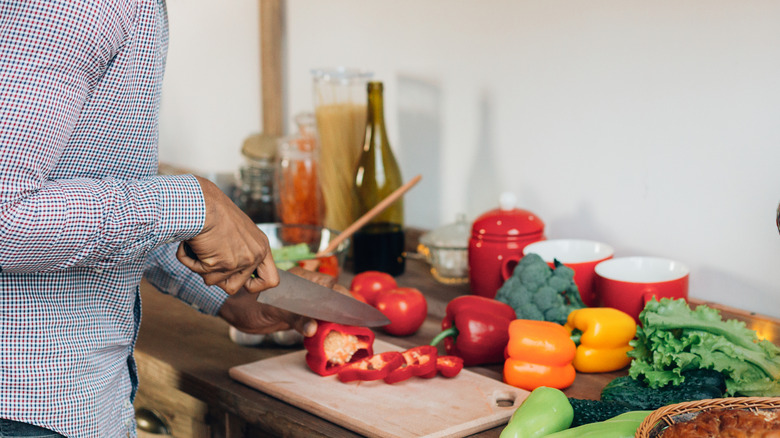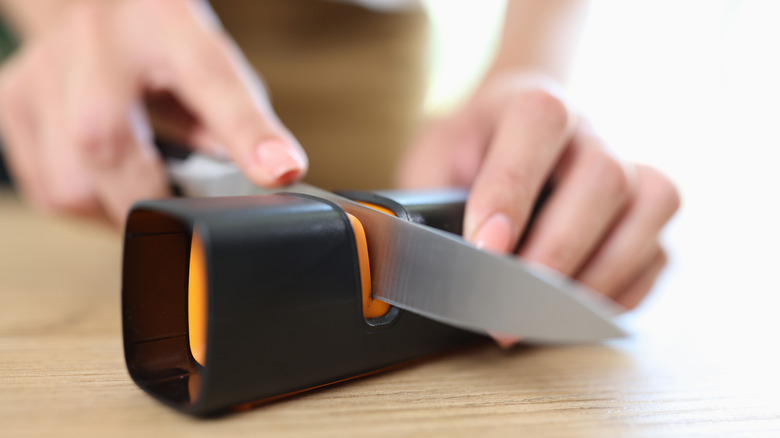The Safety Concern That Means It's Time To Replace Your Kitchen Knives
Knives are one of the most important tools to keep in your kitchen. Regardless of whether you're an avid home cook or not, you likely need to chop, dice, and cut when preparing meals. While good knives can last a lifetime, you may still end up having to replace yours. But when do you know it's time? A key sign that you need to let your knife go is if it quickly dulls even with proper sharpening.
Dull knives aren't only bad because they're less effective; these knives also pose more danger in the kitchen. Without a sharp blade, you need to apply more pressure to cut, which increases the chance of your knife slipping. In addition, cuts from a dull knife can actually be worse than those from a sharp one. That may sound contradictory, but it's because a dull knife will tear your skin rather than neatly slice it.
However, dullness isn't the only warning sign to watch out for with your knives. Other indicators to look out for include rust or discoloration of your blade and loose or broken handles. In addition, you shouldn't use a knife with any major chips or scratches. While small damages are normal and can be repaired if you want, big ones are a hazard because they may transfer slithers of steel into any food items that you cut. If your knife has these issues, you have to let it go. But luckily, these problems aren't inevitable, and you can avoid them with proper knife maintenance.
How to extend your kitchen knife's lifespan
All knives lose sharpness over time from regular use. It's only a problem when it's a frequent issue. Otherwise, sharpening your knife is key to proper maintenance, but there are multiple techniques. For example, stropping and whetstone are sharpening methods that actually do different jobs. Stropping is for refining and polishing a knife's edge, while a whetstone grinds down your blade to actually sharpen it.
When choosing your sharpening method, an important factor to consider is your blade type. While stropping and whetstones are great for standard flat blades, neither method should be used with serrated knives. To properly sharpen a serrated knife for clean cuts, invest in a sharpening rod. After your knife is sharpened, avoid using it on surfaces like glass or marble as it will dull your blade faster. Instead, use wooden or plastic cutting boards.
You can also damage your knife with improper cleaning methods. One big mistake people make is not washing their knife soon enough. This is especially problematic if you're chopping acidic ingredients like lemons, tomatoes, and onions as they may cause corrosion. To avoid problems, try hand-washing your knife with warm, soapy water immediately after each use. Hand-washing is really important because alternatives like your dishwasher can be harsh on your knives. This is primarily due to the heat of a dishwasher along with the aggressive detergents. Finally, drying is the most important step of cleaning your kitchen knives, as this will prevent any rust from forming.

